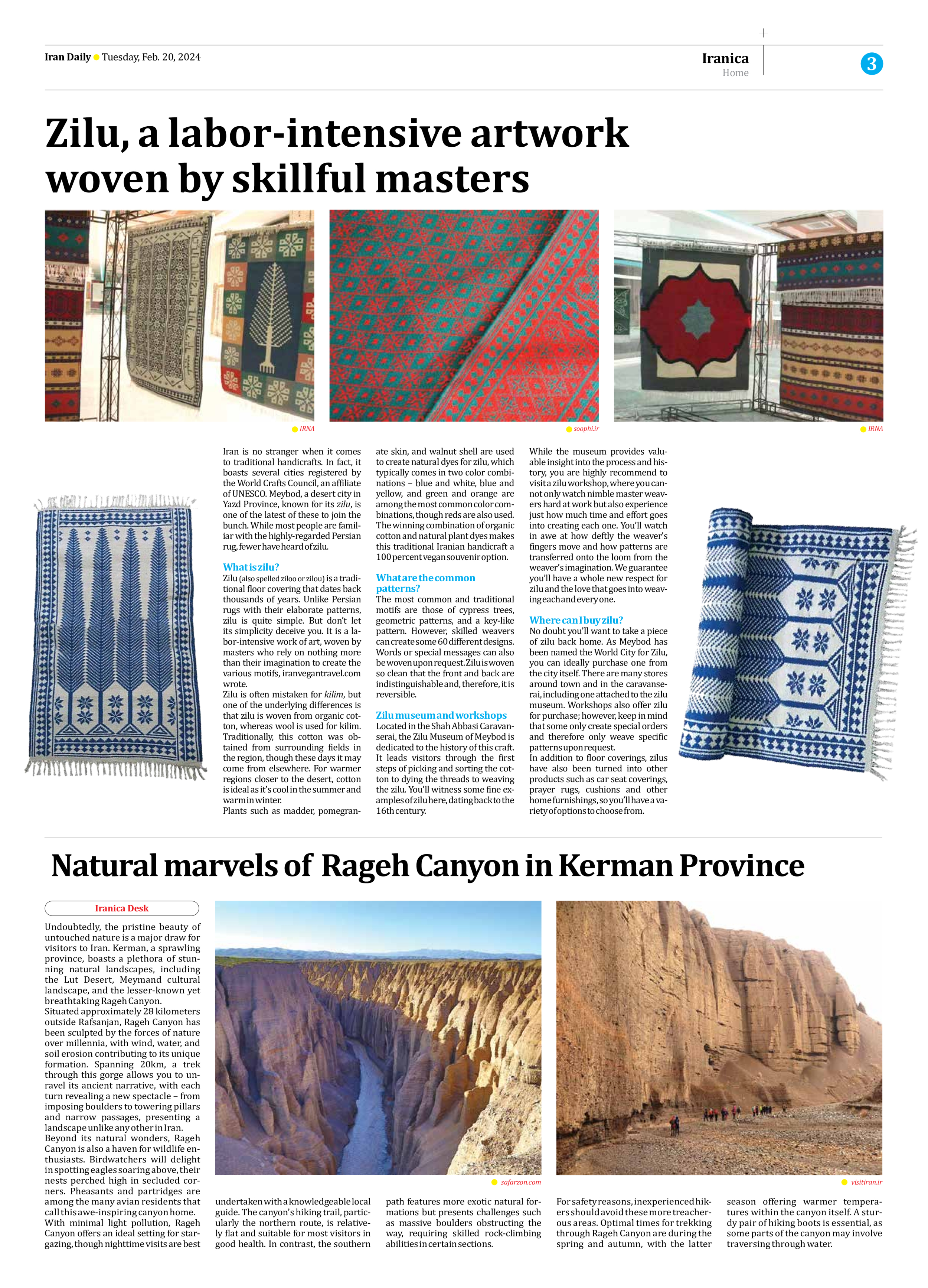
Zilu, a labor-intensive artwork woven by skillful masters
Iran is no stranger when it comes to traditional handicrafts. In fact, it boasts several cities registered by the World Crafts Council, an affiliate of UNESCO. Meybod, a desert city in Yazd Province, known for its zilu, is one of the latest of these to join the bunch. While most people are familiar with the highly-regarded Persian rug, fewer have heard of zilu.
What is zilu?
Zilu (also spelled ziloo or zilou) is a traditional floor covering that dates back thousands of years. Unlike Persian rugs with their elaborate patterns, zilu is quite simple. But don’t let its simplicity deceive you. It is a labor-intensive work of art, woven by masters who rely on nothing more than their imagination to create the various motifs, iranvegantravel.com wrote.
Zilu is often mistaken for kilim, but one of the underlying differences is that zilu is woven from organic cotton, whereas wool is used for kilim. Traditionally, this cotton was obtained from surrounding fields in the region, though these days it may come from elsewhere. For warmer regions closer to the desert, cotton is ideal as it’s cool in the summer and warm in winter.
Plants such as madder, pomegranate skin, and walnut shell are used to create natural dyes for zilu, which typically comes in two color combinations – blue and white, blue and yellow, and green and orange are among the most common color combinations, though reds are also used. The winning combination of organic cotton and natural plant dyes makes this traditional Iranian handicraft a 100 percent vegan souvenir option.
What are the common patterns?
The most common and traditional motifs are those of cypress trees, geometric patterns, and a key-like pattern. However, skilled weavers can create some 60 different designs. Words or special messages can also be woven upon request. Zilu is woven so clean that the front and back are indistinguishable and, therefore, it is reversible.
Zilu museum and workshops
Located in the Shah Abbasi Caravanserai, the Zilu Museum of Meybod is dedicated to the history of this craft. It leads visitors through the first steps of picking and sorting the cotton to dying the threads to weaving the zilu. You’ll witness some fine examples of zilu here, dating back to the 16th century.
While the museum provides valuable insight into the process and history, you are highly recommend to visit a zilu workshop, where you cannot only watch nimble master weavers hard at work but also experience just how much time and effort goes into creating each one. You’ll watch in awe at how deftly the weaver’s fingers move and how patterns are transferred onto the loom from the weaver’s imagination. We guarantee you’ll have a whole new respect for zilu and the love that goes into weaving each and every one.
Where can I buy zilu?
No doubt you’ll want to take a piece of zilu back home. As Meybod has been named the World City for Zilu, you can ideally purchase one from the city itself. There are many stores around town and in the caravanserai, including one attached to the zilu museum. Workshops also offer zilu for purchase; however, keep in mind that some only create special orders and therefore only weave specific patterns upon request.
In addition to floor coverings, zilus have also been turned into other products such as car seat coverings, prayer rugs, cushions and other home furnishings, so you’ll have a variety of options to choose from.







